I’ve seen a couple of blog posts go by my various feeds within the past week that seem to be getting a lot of shares. People like those easy 5-point lists that promise easy ways to get better at something, and they also like models that give them a sense of belonging. However, while I can appreciate that no one can learn their path from a list and that the concept of ‘flexible covens’ gives people a descriptor for the kind of informal magical alliances we often find ourselves in nowadays, I still found elements of these posts problematic.
The Old Days and Five-Point Lists
A few weeks ago, a Facebook friend shared a blog post she wrote about shielding (you can read it here), and we got into a conversation in the comments on meditation. You see, for years I’ve been under the impression that this is one topic that magic 101 books have neglected for a while now. And that’s not entirely surprising, because the most part, meditation is massively misunderstood in the West. Moreover, it seems to be one of those parts of spiritual/magical practice that people decide are too hard. Worse, a lot of people don’t even know why meditation is so important for spiritual/magical practice.
However, when you read older magic 101 books, or books written by people who are more old school, they’re pretty uncompromising on the need to develop a practice. And like I said, I’ve been under the impression for years now that a lot of the witch 101 books have become more…compromising. (Of course, the cynic in me just says that people write whatever books they feel will sell regardless of their utility for practice.) But it would seem, at least from the conversation with my friend and other participants in the thread, that I am not the only practitioner to have noticed this trend.
And this is where we come to what I would put on a five-point list. This is not a five-point list that claims to teach you everything, but if you follow it, you will level up your witchery.
#1 Meditation
Yeah, I get it. You fucking hate meditation. It’s boring as shit, and who the fuck could just sit there and do nothing until they have no more thoughts in their heads (and who the fuck wants that anyway?)? Also, what the fuck even is the point? It’s also completely impossible.
Okay, so now we’ve got the excuses out of the way, let’s go through a quick  rundown of what meditation actually is.
rundown of what meditation actually is.
So the first problem is that we can’t actually give a potted definition because there are multiple different types of meditation and they have different goals. There’s also so much damn material out there on those different types too – no seriously, there are entire manuals written about each variety (and multiple manuals as well!).
However, the type you should probably begin with is what is referred to as ‘calm abiding’ meditation, or shamatha. I suggest this for four reasons:
1. Shamatha stabilizes the mind, making it far less volatile and allowing you to really take stock and figure out what the hell you’re doing before you start flinging magic like a monkey flings poop. It also makes it easier to catch your mind when it’s trying to run away with you in scary situations.
2. Shamatha includes the same kind of mental discipline as mindfulness. This is indispensable for developing not only will, but the ability to maintain focus on whatever the hell you’re doing magically.
3. It also provides an opportunity to practice visualization. In Shamatha you learn by using ‘supports’. Now, the support can either be a physical object that you maintain single-pointed awareness of, or a visualized object (such as a ball of light that you visualize just sitting there chilling out on your carpet). This is like magical cross-training because you’re not only stabilizing and strengthening your mind muscles, but you’re also working on those visualization skills while you’re at it!
4. Finally, if you stick with it, it can become a source of major insight. Things will arise that will help guide you along your path.
Interested? The Buddhists have the best materials on this mind-tech, so I recommend checking this and this out for an easy explanation, and then picking up this book by Pema Chödrön for more concise instructions. The (free) beginner magic course over at Quareia isn’t half bad either!
#2 Keep a Journal
I’ve posted about this before, but I’m going to reiterate its importance here. Magical journals are incredibly important to developing a practice – regardless
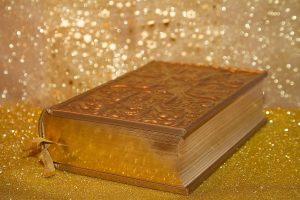
of what your magic looks like. There are a number of reasons for this. But the biggest one is keeping a record. This sounds like a no-brainer, but keeping a record of dreams/trances/interactions with the Other/magical workings/insights/and especially pacts can help save your ass down the line like you wouldn’t believe. Not only that, but it will help you take stock of what you’ve done/experienced, and show you how to tweak what you do to get better results in future. A well-kept journal can highlight so many teachable moments, and we always learn far better from our fuck-ups than the things that went perfectly.
#3 Get to Know Your Local Area and Work on Connection
This is a multilayered recommendation. For me, the process of creating connection begins with going for long walks. Back in the 1990s I read in a book that a witch should explore a 5 mile radius from their home in order to get to know it and that advice has stood me in good stead since. But what am I looking for?
On a purely physical level, I note the trees, the types of plants, the rivers, the graveyards, and any spaces that just interest me for historical or aesthetic reasons.
But then there’s the hidden dimension too. This is best expressed in questions like “Why does that tree draw me?”, “How does it feel?”, “Why do I get the feeling I’m being watched in that place?”, and “Does it feel friendly or unfriendly?”. I recommend bringing offerings on these walks. You may find the  unseen interacting with you in some of these places, and that’s fantastic. That’s what you want as a witch! Relationships with the Unseen have always been part and parcel of witchery. Just remember to be polite and to never offer anything of yourself or that you are not prepared to truly give.
unseen interacting with you in some of these places, and that’s fantastic. That’s what you want as a witch! Relationships with the Unseen have always been part and parcel of witchery. Just remember to be polite and to never offer anything of yourself or that you are not prepared to truly give.
Sometimes you find places where you feel like someone may be there, and these are the places where you can sit out (as long as the vibes are good).
The practice of sitting out is old – very old, and no one knows exactly how to do it. However, the method I’ve found that works best for me is to simply allow myself to sort of melt into the land – to become a part of it – then just simply sense what or who is around me.
I’m not going to lie, there is an element of danger in this kind of work – a place can quickly go from welcoming to dangerous. Just remember that offerings can appease, apotropaics and amulets are a great idea, and that Morgan Daimler writes a whole bunch of books about staying safe(ish) when dealing with the Other (you should absolutely read them).
#4 Read Widely – Especially Those Older Texts
Humans have been doing magic for a really long time, and even better, a good chunk of us have been writing that shit down whenever we’ve had the ability and/or cultural imperative to do so.
So it goes without saying that there’s a hell of a lot out there. Moreover, much of it is far better than the stuff we find in modern texts. Okay, so the style of writing might not be as accessible, but the shapes of magic are pretty well conserved over the years. These shapes can give us the underlying mechanics of how different magics work, and that’s probably one of the most useful things any witch could learn. Moreover, being “conversant” in more forms of magic only adds to your ability to not only diversify your practice, but tweak your workings to get better results, and adapt when encountering magic that is the product of a different paradigm.
To learn about the shapes of Goetia, check out Jake Stratton-Kent’s work.
To learn about Greco-Egyptian magical shapes, Stephen Skinner is a good bet.
Aaron Leitch explains Solomonic magical patterns.
Paul Huson shows some of how all that stuff above can be shoved into a witchcraft paradigm.
Folks like Jason Miller and Gordon White also show some of that sexy adaptation shit.
People like Ian Corrigan leverage grimoire—shaped magic for Irish-inspired workings.
And those are just a few examples! If you really want to get into the weeds, you can also read reconstructionist magical sources of Irish/Norse/Old English/Greek/groups not represented above.
Cool, huh?
#5 Commit to Experiment, Commit to Practice!
But none of the above is any good unless you commit. You need to commit to experiment (so you can find your flavor of practice), and you need to commit to practice.

Nothing happens without putting in that work, and if you cannot commit, then maybe you need to evaluate whether or not you should even bother trying to level up? Or even bother with any of this. It’s okay to just find something interesting and enjoy the aesthetic. That doesn’t detract from your inherent value as a person. Or maybe it’s just not your time yet? That’s also okay. There’s nothing wrong with thinking about whether you’re ready yet. Magic can fuck you up, so it’s important to be self-aware and honest with yourself about this.
But if you’re ready to go balls to the wall on this magic thing, then do that. Do the meditation even though you fucking hate it. Keep that journal. Walk like Hobbits on their way to Mordor. Make allies and figure out who to avoid. Read all the things. Grow.
You’ve got this.
But one thing you should absolutely be wary of doing is getting in one of those ‘flexible covens’.
Flexible Covens
Look I get it, it sounds really nice, the vast majority of people don’t come across their perfect coven. So a lot of folks end up working with people in a really undefined way.
From that perspective, the idea of a ‘flexible coven’ is lovely. It projects a sense of belonging and closeness, and that’s entirely why it’s a terrible idea.
Think about all the things you associate with the word ‘coven’. I bet all those ideas are overwhelmingly positive (at least if you’ve never been burned by one), right?
Herein lies the problem. The thing about membership in a coven or any tight magical group is that there is a level of trust and intimacy. It’s the kind of ‘deep’ you don’t find in the kind of casual friendships mentioned in the ‘flexible coven’ post. You are connected on a level that is hard to describe, and strange things happen because of those connections all the damn time.
I’m in a magical group, it’s kind of an outgrowth of our battlefield psychopomp group. And though we don’t refer to ourselves as a ‘coven’, that is pretty much what we are. We are a ‘magical family’ – that’s probably a good term for it.
To give you an example of the kind of thing that happens to us, we were looking for retreat places. You know, somewhere where we could disappear for a couple of days and just immerse ourselves. So naturally, I became fixated on this one place – Shepherdstown WV. I posted about it in our chat and found that two group members were actually in Shepherdstown. They’d driven up randomly and I hadn’t known about it before they posted.
This is on top of all the other stuff like dreams with shared themes on the same night. Or contacting each other randomly when someone is working magic. These are people I trust and share secrets with. These are people who, if they violated their oaths, could harm me (and I them).
This is precisely the problem with the ‘flexible coven’ though. When you work deeply with people on a magical level, you share a lot of yourself. You make yourself vulnerable and consider them ‘safe’. You stop doing things like clearing your hairbrush before they come round or keeping hawk eyes on your tools. In other words, they gain opportunities to really fuck you up.
But what of people who start to think of others as ‘coven’ without those bonds and oaths being there?
I would advise caution. Perhaps create for yourself an inner and outer court system like some covens have. Make your inner court those who have proven to you again and again that they are worthy of your trust. Casual acquaintances you like and work with occasionally can fill your outer court.
In other words, don’t give ‘the keys to the castle’ to anyone who hasn’t earned it. (And even then, keep a backup plan just in case!)

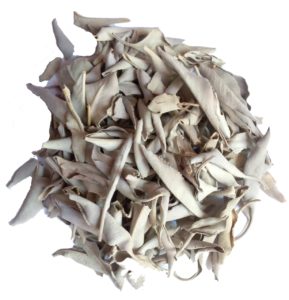


 “whiteness” in this post. When I speak of “whiteness”, I speak of a construct that sits in our society like a gated community that limits its entry to those who fit certain criteria. To reiterate, this is not a post about the the intrinsic and innate, of melanin and ancestry. It is a post about a social construct which actively excludes, harms, and which I believe to be completely incompatible with Witchcraft.
“whiteness” in this post. When I speak of “whiteness”, I speak of a construct that sits in our society like a gated community that limits its entry to those who fit certain criteria. To reiterate, this is not a post about the the intrinsic and innate, of melanin and ancestry. It is a post about a social construct which actively excludes, harms, and which I believe to be completely incompatible with Witchcraft. exist. Laws both in the early colonies and Barbados instead focused on religion, setting aside freedoms for Christians and relegating non-Christians to servitude and slavery. However, as times changed and more people of color (both free and enslaved) became Christians, that legal language was changed. The goalposts were moved in order to retain power among the white landowning elite. 1697 saw the passage of the first law that restricted voting rights to only the white
exist. Laws both in the early colonies and Barbados instead focused on religion, setting aside freedoms for Christians and relegating non-Christians to servitude and slavery. However, as times changed and more people of color (both free and enslaved) became Christians, that legal language was changed. The goalposts were moved in order to retain power among the white landowning elite. 1697 saw the passage of the first law that restricted voting rights to only the white 

 Think about the voices you listen to and the voices you give space to and elevate (
Think about the voices you listen to and the voices you give space to and elevate (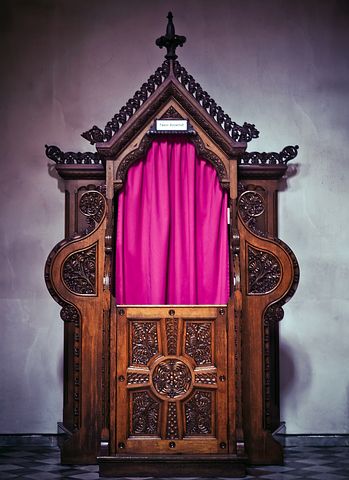




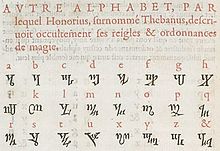 journals are anything to go by, I could back then. But now? Nope! It’s the so-called ‘Witches’ Alphabet’ (taken from Trithemius who apparently got it from a possibly mythical character), and I can’t read it.
journals are anything to go by, I could back then. But now? Nope! It’s the so-called ‘Witches’ Alphabet’ (taken from Trithemius who apparently got it from a possibly mythical character), and I can’t read it.


 entice you into some kind of oath, your first move is always research. Go find out everything you can about them, and if it’s not available in physical sources, go pester allies for more information. Because there are a whole bunch of things you need to know here. For example, you need to know their MO; if they’re presenting themselves as they actually are; how others have fared dealing with them; and if they have a GSOH and enjoy long walks on the beach at sunset. Because all of that will not only help you figure out *who* you’re dealing with, but also help you better word any oaths you make so that you can do stuff like insert more protective clauses (which is #winning, trust me).
entice you into some kind of oath, your first move is always research. Go find out everything you can about them, and if it’s not available in physical sources, go pester allies for more information. Because there are a whole bunch of things you need to know here. For example, you need to know their MO; if they’re presenting themselves as they actually are; how others have fared dealing with them; and if they have a GSOH and enjoy long walks on the beach at sunset. Because all of that will not only help you figure out *who* you’re dealing with, but also help you better word any oaths you make so that you can do stuff like insert more protective clauses (which is #winning, trust me).
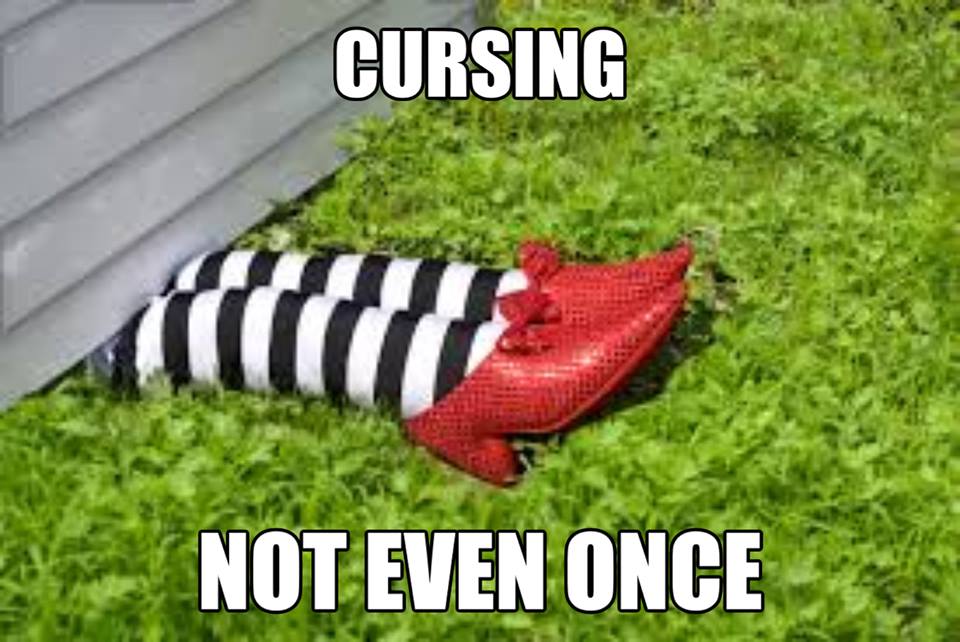



 Addicts, that’s who. Like I said above, those baneful magics are as bad as meth, and just like meth, you can literally get your hands blown off cooking it up.
Addicts, that’s who. Like I said above, those baneful magics are as bad as meth, and just like meth, you can literally get your hands blown off cooking it up.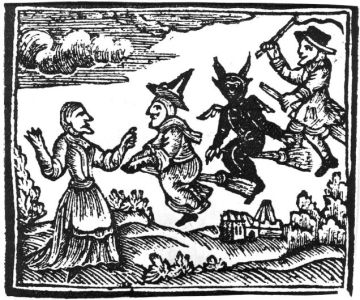
 palm tree, despite the fact that it’s clearly not. Let’s face it, it looks nothing like a palm tree. Now I’m not saying it is a demon (we do live in the era of Photoshop), but what is curious is the vehemence that people are defending the palm tree explanation. This reminded me of something I heard while in a trance once. In the trance I was walking down the street, but it wasn’t just populated by the living and seen, but by everything from ghosts, to faeries, to creatures of a more mythological nature. Weaving in and around the living and seen, they went completely unnoticed, and I was baffled. How could these people just go about their shopping and *not* notice that dragon? Then came the voice. It was not a ‘head voice’ but external, coming with all the force of an air canon.
palm tree, despite the fact that it’s clearly not. Let’s face it, it looks nothing like a palm tree. Now I’m not saying it is a demon (we do live in the era of Photoshop), but what is curious is the vehemence that people are defending the palm tree explanation. This reminded me of something I heard while in a trance once. In the trance I was walking down the street, but it wasn’t just populated by the living and seen, but by everything from ghosts, to faeries, to creatures of a more mythological nature. Weaving in and around the living and seen, they went completely unnoticed, and I was baffled. How could these people just go about their shopping and *not* notice that dragon? Then came the voice. It was not a ‘head voice’ but external, coming with all the force of an air canon.









